#Pollution Principles
Text
DO NOTHING:The core of urban engineering (3:3/3 Essay) last
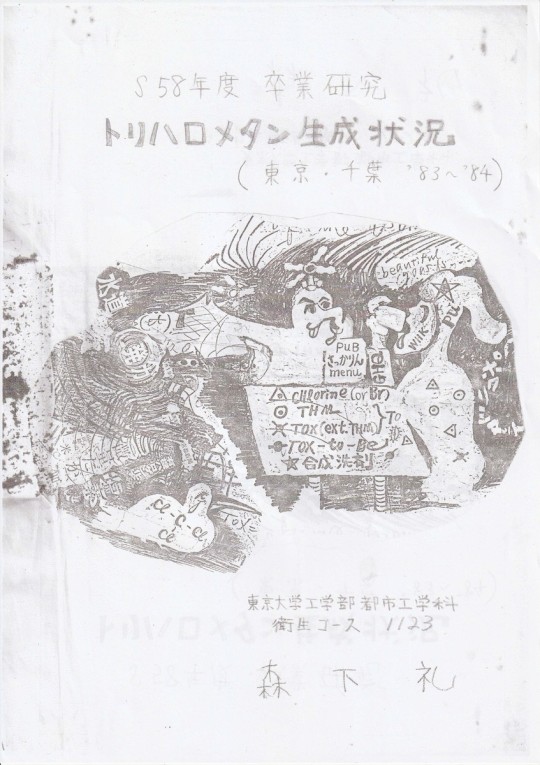
My manga drawn at the beginning of graduation thesis (my Guernica)
Lifeboat by Associate Professor Morimura
Two years later, Associate Professor Morimura was very helpful to me during my thesis examination. After my voluntary exercise, I repeated a grade (second time) and worked on my thesis in a situation where he had to graduate properly this time. On the day of the examination, when it was my turn to announce, Associate Professor H was biting. I was wearing very rough clothes and had a muffler around my neck. He said: "Morishita, I'll never graduate you,if you don't take the muffler and announce it!" In response to that, I: "I understand, should I take it? I did.
I had a close relationship with Associate Professor H. I once had a busy part-time job and told Associate Professor H that I didn't have time to attend exercises (required). This imitated the critic Hideo Kobayashi once told Professor Yutaka Tatsuno of the French Literature Department, "I have to earn money because I live with a woman, so I don't have time to attend classes." However, in the case of Kobayashi, he was given an exam, and when Professor Tatsuno saw the result, he said, "If you can do this much, you don't have to go to class." Instead, I was just told, "Anyway, go to the exercises." Associate Professor H and I were worst relationship .
He belonged to the mainstream of urban engineering and sanitary engineering. Associate Professor H is one of the servant of Mr. Tamon Ishibashi (deceased), who is famous for good or bad in the world of water treatment. Mr. Ishibashi is a person who has a good face in the Ministry of Health and Welfare (at that time), and he is doing various bad things. One example is how to get involved in the water supply plan in Takayama City, Gifu Prefecture. Takayama City has selected a site with an abandoned mine upstream as a water source. There is a risk of mine poisoning.
After seeing the plan, Mr. Ishibashi gave a go-ahead to the construction just by reading the plan, that is, without looking at the actual situation. Anxious, the locals turned to a graduate student in sanitary engineering for help. Here, an unprecedented war broke out between the professor and the go apprentices. Mr. Ishibashi hung up by the graduate students, but at that time, it was Associate Professor H who helped Mr. Ishibashi by putting pressure on the graduate students, such as not arranging employment.
The above process is described in detail in "Pollution Principles ( Voluntary course)". I knew that, so to Associate Professor H I had something close to hostility, and so did he. It happened that the person in charge of employment at my time was Associate Professor H, so I refused to mediate. By the way, the current sanitary engineering of the Department of Urban Engineering is solidified by the network of Associate Professor Ishibashi-H. It's not a gorgeous thing.
I was able to graduate remarkably. Assistant Nakanishi taught me the first act of the faculty meeting. Associate Professor H disagreed with my graduation and said, "The announcement was amazing, but he haven't written half the text of my thesis yet. Can I graduate this guy!" At that time, Associate Professor Morimura said, "Mostly, H! Some people go on an overseas trip without writing their thesis properly, but he writes the text properly. Let him graduate!"
That's right. Unlike Associate Professor H, who became an assistant professor through connections, Associate Professor Morimura, who became an assistant professor with his own abilities, said "a heavy and precious word." It seems that no one disagreed. I was also fortunate that Associate Professor Morimura was an instructor in urban planning, not in sanitary engineering. Urban engineering consists of urban planning and sanitary engineering.
At the graduation party, Associate Professor Morimura said, "I thought you would do it, but I didn't think you would do it this much. You can do anything after graduation, but please let me know your activity report." He talked to me. My work also impressed Professor Morimura. For me, Assistant Ui and Assistant Nakanishi are Mr. Ui and Ms.Nakanishi. Associate Professor Morimura will be "Professor Morimura" forever. By the way, Professor V did not attend my thesis examination.
#do nothing#無為#Lao Tzu#老子#manga#graduation thesis#Guernica#lifeboat#Professor Morimura#Hideo Kobayashi#sanitary engineering#Pollution Principles#Voluntary course#urban planning#urban engineering#essay#Rei morishita
3 notes
·
View notes
Text

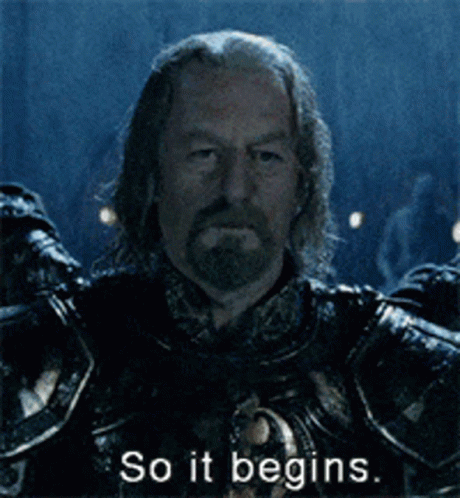
I thought I sensed cruise ship passengers about….
#no actually I kind of like the ships they’re fun people watching#now that I don’t have to work in tourism and actually deal with them#like I don’t on principle due to the pollution and etc etc#but they do liven things up
2 notes
·
View notes
Text
Apparently my economics brain didn’t get turned off cause I saw a post that said “pull her panties to the side” and read it as “polluter pays principle”
#I scrolled back up like omg who’s talking about the polluter pays principle I just explained that on a test#and then was like.. oh oops nevermind
6 notes
·
View notes
Text
Today's Thought
"The Polluter should, in principle, bear the cost of pollution with due regard to the public interest"
Rio Declaration 1992

#Though#today thought#Pollution#Rio#declaration#interest#public#Principle#quote#life quote motivation#motivation
0 notes
Text
THIS THIS THIS THIS THIS.
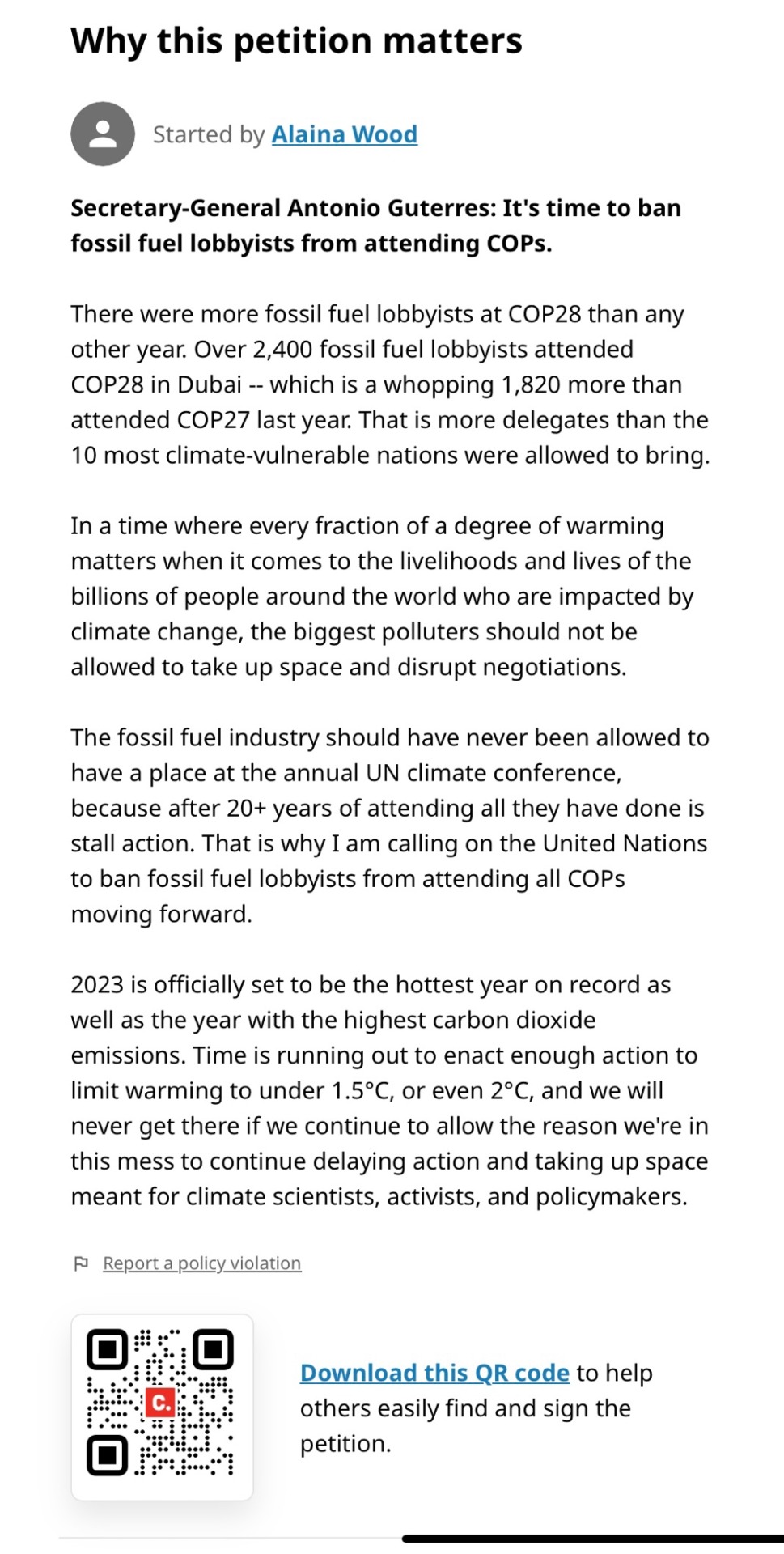
Please sign the petition if you can!!
(Here’s the link to Alaina’s linktree which provides additional links to other important causes.)
#no more cop outs#Alaina Wood#COP28#climate change#polluter pays principle#science#ecology#environmental science#nature#fossil fuels#fossil fuel lobbyists#1.5 degrees#2 degrees#UN climate conference#hottest hear in record#carbon dioxide#eco anxiety#eco activism
1 note
·
View note
Text
Making Sense of Terms Around the Climate Change Debate
Climate change is one of the most significant contemporary issues for human societies. Barely any issues are as significant as climate change in today’s world. Sure, there has been a COVID pandemic, there is also war in Ukraine, and then there is a global economic recession, along with all the communal upheaval across the globe, mediated by inequalities and poor living conditions. Some (like Adam…

View On WordPress
#beneficiary pays principle#carbon footprint#carbon neutrality#carbon pricing#climate change#climate justice#common but differentiated responsibilities#concepts of climate change debates#debates on climate change#historical responsibilities#net-zero emissions#polluter pays principle#risk society and climate change#what are historical responsibilities in climate change debates?#what are the key terms around climate change#what is adaptation of climate change#what is climate change#what is difference between global north and global south#what is mitigation of climate change
0 notes
Text
I fucking hate the old tram cars in this stupid city. Seriously fuck your aesthetic on top of not being handicap accessibe, the doors dont seal properly so it leaks heat amd to compensate they crank the heat all the way up (but they chose not to reduce the light display at christmas to save energy like the city promised they would). I shouldnt be sweating through my clothes in the wintertime during the 10 minutes i have to ride the transit before going back out into sub zero temp and frozen rain thats how you get fucking sick. But they are so eugenicist here theyre all perfectly happy to have corona and the flu run wild if it means not having to make any changes.
#i have literally never encounteres a culture more strongly dedicated to resisting any form of change#just on principle that nothing should ever change ever#(they think they have achieved the epitome of civilization and culture and so there is nothing to change)#once again#i have literally never met a more self deluded people#this city is so far from being actually sustainable especially compared to other cities in europe#but they genuinely think they do a good job at being green#while they literally burb trash in the middle of the city amd the entire weekend was an air pollution warning#cant tell thess guys their city is dirty tho esp the locals are so so far i to their deluaions of grandeur and superiority#bruh your city is in .decline
0 notes
Text
« To mention the global loss of biodiversity, that is to say, the disappearance of life on our planet, as one of our problems, along with air pollution or ocean acidification, is absurd—like a doctor listing the death of his patient as one symptom among others.
The ecological catastrophe cannot be reduced to the climate crisis. We must think about the disappearance of life in a global way. About two-thirds of insects, wild mammals and trees disappeared in a few years, a few decades and a few millennia, respectively. This mass extinction is not mainly caused by rising temperatures, but by the devastation of natural habitats.
Suppose we managed to invent clean and unlimited energy. This technological feat would be feted by the vast majority of scientists, synonymous in their eyes with a drastic reduction in CO2 emissions. In my opinion, it would lead to an even worse disaster. I am deeply convinced that, given the current state of our appetites and values, this energy would be used to intensify our gigantic project of systemic destruction of planetary life. Isn't that what we've set out to do—replace forests with supermarket parking lots, turn the planet into a landfill? What if, to cap it all, energy was free?
[...C]limate change has emerged as our most important ecological battle [...] because it is one that can perpetuate the delusional idea that we are faced with an engineering problem, in need of technological solutions. At the heart of current political and economic thought lies the idea that an ideal world would be a world in which we could continue to live in the same way, with fewer negative externalities. This is insane on several levels. Firstly because it is impossible. We can't have infinite growth in a finite world. We won't. But also, and more importantly, it is not desirable. Even if it were sustainable, the reality we construct is hell. [...]
It is often said that our Western world is desacralised. In reality, our civilisation treats the technosphere with almost devout reverence. And that's worse. We perceive the totality of reality through the prism of a hegemonic science, convinced that it “says” the only truth.
The problem is that technology is based on a very strange principle, so deeply ingrained in us that it remains unexpressed: no brakes are acceptable, what can be done must be done. We don't even bother to seriously and collectively debate the advisability of such "advances". We are under a spell. And we are avoiding the essential question: is this world in the making, standardised and computed, overbuilt and predictable, stripped of stars and birds, desirable?
To confine science to the search for "solutions" so we can continue down the same path is to lack both imagination and ambition. Because the “problem” we face doesn't seem to me, at this point, to be understood. No hope is possible if we don't start by questioning our assumptions, our values, our appetites, our symbols... [...] Let's stop pretending that the numerous and diverse human societies that have populated this planet did not exist. Certainly, some of them have taken the wrong route. But ours is the first to forge ahead towards guaranteed failure. »
— Aurélien Barrau, particle physicist and philosopher, in an interview in Télérama about his book L'Hypothèse K
2K notes
·
View notes
Text
"Clothing tags, travel cards, hotel room key cards, parcel labels … a whole host of components in supply chains of everything from cars to clothes. What do they have in common? RFID tags.
Every RFID (Radio Frequency Identification) tag contains a microchip and a tiny metal strip of an antenna. A cool 18bn of these are made – and disposed of – each year. And with demands for product traceability increasing, ironically in part because of concerns for the social and environmental health of the supply chain, that’s set to soar.
And guess where most of these tags end up? Yup, landfill – adding to the burgeoning volumes of e-waste polluting our soils, rivers and skies. It’s a sorry tale, but it’s one in which two young graduates of Imperial College London and Royal College of Art are putting a great big green twist. Under the name of PulpaTronics, Chloe So and Barna Soma Biro reckon they’ve hit on a beguilingly simple sounding solution: make the tags out of paper. No plastic, no chips, no metal strips. Just paper, pure and … simple … ? Well, not quite, as we shall see.
The apparent simplicity is achieved by some pretty cutting-edge technical innovation, aimed at stripping away both the metal antennae and the chips. If you can get rid of those, as Biro explains, you solve the e-waste problem at a stroke. But getting rid of things isn’t the typical approach to technical solutions, he adds. “I read a paper in Nature that set out how humans have a bias for solving problems through addition – by adding something new, rather than removing complexity, even if that’s the best approach.”
And adding stuff to a world already stuffed, as it were, can create more problems than it solves. “So that became one of the guiding principles of PulpaTronics”, he says: stripping things down “to the bare minimum, where they are still functional, but have as low an environmental impact as possible”.
...how did they achieve this magical simplification? The answer lies in lasers: these turn the paper into a conductive material, Biro explains, printing a pattern on the surface that can be ‘read’ by a scanner, rather like a QR code. It sounds like frontier technology, but it works, and PulpaTronics have patents pending to protect it.
The resulting tag comes in two forms: in one, there is still a microchip, so that it can be read by existing scanners of the sort common within retailers, for example. The more advanced version does away with the chip altogether. This will need a different kind of scanner, currently in development, which PulpaTronics envisages issuing licences for others to manufacture.
Crucially, the cost of both versions is significantly cheaper than existing RFID kit – making this a highly viable proposition. Then there are the carbon savings: up to 70% for the chipless version – so a no-brainer from a sustainability viewpoint too. All the same, industry interest was slow to start with but when PulpaTronics won a coveted Dezeen magazine award in late 2023, it snowballed, says So. Big brands such as UPS, DHL, Marks & Spencer and Decathlon came calling. “We were just bombarded.” Brands were fascinated by the innovation, she says, but even more by the price point, “because, like any business, they knew that green products can’t come with a premium”."
-via Positive.News, April 29, 2024
--
Note: I know it's still in the very early stages, but this is such a relief to see in the context of the environmental and human rights catastrophes associated with lithium mining and mining for rare earth metals, and the way that EVs and other green infrastructure are massively increasing the demand for those materials.
I'll take a future with paper-based, more humane alternatives for sure! Fingers crossed this keeps developing and develops well (and quickly).
#I do really wish it could be read by regular scanners already though#that's what I thought at first#and that would've been fucking amazing#but this is still pretty cool#electronics#science and technology#green technology#ewaste#landfill#lithium#lithium mining#human rights#environment#climate action#climate hope#rfid#rfid technology#rfid tags#good news#hope
388 notes
·
View notes
Text
February
by Margaret Atwood
Winter. Time to eat fat
and watch hockey. In the pewter mornings, the cat,
a black fur sausage with yellow
Houdini eyes, jumps up on the bed and tries
to get onto my head. It’s his
way of telling whether or not I’m dead.
If I’m not, he wants to be scratched; if I am
He’ll think of something. He settles
on my chest, breathing his breath
of burped-up meat and musty sofas,
purring like a washboard. Some other tomcat,
not yet a capon, has been spraying our front door,
declaring war. It’s all about sex and territory,
which are what will finish us off
in the long run. Some cat owners around here
should snip a few testicles. If we wise
hominids were sensible, we’d do that too,
or eat our young, like sharks.
But it’s love that does us in. Over and over
again, He shoots, he scores! and famine
crouches in the bedsheets, ambushing the pulsing
eiderdown, and the windchill factor hits
thirty below, and pollution pours
out of our chimneys to keep us warm.
February, month of despair,
with a skewered heart in the centre.
I think dire thoughts, and lust for French fries
with a splash of vinegar.
Cat, enough of your greedy whining
and your small pink bumhole.
Off my face! You’re the life principle,
more or less, so get going
on a little optimism around here.
Get rid of death. Celebrate increase. Make it be spring.
506 notes
·
View notes
Text
Automotive Supercharging and Turbocharging Manual: A Technical Guide :: John D. Humphries
Automotive Supercharging and Turbocharging Manual: A Technical Guide :: John D. Humphries

View On WordPress
#0-8542-9880-0#adding turbocharger#books by john d humphries#boost control#car superchargers#car turbochargers#engines#exhaust pollution control#exhaust systems#first edition books#gas turbines#induction systems#internal combustion engines#motor vehicles#principles supercharging#supercharger performance#supercharging engines#turbocharger design#turbocharging engines
0 notes
Note
Please don’t use midjourney it steals art from pretty much every artist out there without any compensation. I didn’t know this at first and tried it but then during the creation process i saw water marks and Getty image logos (though I’m sure they’ve hidden that now) so it’s definitely stealing.
No, it isn't. And you've taken the wrong lesson from the Getty watermark issue.
AI training on public facing, published work is fair use. Any published piece could be located, examined, and learned from by a human artist. This does not require the permission of the owner of said work. A mechanical apparatus does not change this principle.
All we, as artists, own, are specific expressions. We do not own styles, ideas, concepts, plots, or tropes. We do not even own the work we create in a proper sense. All our work flows from the commons, and all of it flows back to it. IP is a limited patent on specific expressions, and what constitutes infringement is the end result of the creative process. What goes into it is irrelevant, and upending that process to put inspiration and reference as infringement is the end of art as we know it.
The Getty watermark issue is an example of overfitting, wherein a repetitive element in the dataset over-emphasizes specific features to the point of disrupting the system's attempts at the creation of novel images.
No one denies that the SD dataset is trained on images Getty claims to own, but Getty has so polluted the image search functions of the internet with their watermarked images that the idea of a getty watermark has been picked up the same way the AI might pick up the idea of an eye or a tree branch. It is a systemic failure that Shutterstock and Getty can be so monopolistic and ubiquitous that a dateset trained on literally everything public facing on the internet would be polluted with their watermarks.
Watermarks that, by the way, they add to public domain images, and that google prioritizes over clean versions.
The lawsuits being brought against Midjourney and Stable Diffusion are copyright overreach being presented as a theft tissue. The facts of the matter are not as the litigants state. The images aren't stored, the SD weights are a 4 gig file trained on 250 terabytes, roughly 4 bytes per image. It runs local, does not reach out to image sources over IP. All you've got are mathematical patterns and ratios. I would go so far as to say that the class action suit is based on outright lies.
But for a moment, let's entertain the idea that what goes into a work, as inspiration, can be copyrighted. That styles can be stolen. That what goes in defines infringement, rather than what comes out. What happens then?
Well, the bad news is that if Stable Diffusion and Midjourney were shut down tomorrow, Stable Diffusion is in the wild. It runs local, it's user-trainable. In short, the genie isn't going back in the bottle. Plus, the way diffusion AI works, there's no way to trace a gen to its sources. The weights don't work like that. The indexing would be larger than the entire set of stored patterns.
Well good news, there's an AI for that. The current version is called CLIP Interrogator And it works on everything. Not just AI generated, but any image. It can find what style it closely matches, reverse engineer a prompt. It's crude now, but it will improve.
Now, you've already established that using the same patterns as another work is infringement. You've already established that inspiration is theft. And now there's a robot that tells lawyers who you draw like.
Sure, you can fight it in court. If it goes go to court. But who's to say they won't just staplegun that AI to a monetization re-direction bot like youtube has going with their content ID? Awesome T-shirt design you uploaded to your print-on-demand shop... too bad your art style resembles that from a cartoon from 1973 that Universal got as part of an acquisition and they've claimed all your cash. Sure you can file a DMCA counter-notice, but we all know how that goes.
And then there's this fantasy that upending the system would help artists. But who would "own" that style? Is that piece stealing the style of Stephen Silver, or Disney's Kim Possible(TM)? When you work for Disney their contracts say everything you make is theirs. Every doodle. Every drawing. If the styles are copyrightable, a company could hire an artist straight out of school, publish their work under work-for-hire, fire them, and then go after them for "stealing" the style they developed while working for said corp.
Not to mention that a handful of companies own so much media that it is going to be impossible to find an artist that hasn't been influenced by something under their control.
Oh, and that stock of source images that companies like Disney and Universal have? These kinds of lawsuits won't stop them from building AIs with that material that they "own". The power goes into corp hands, they can down staff to their heart's content and everyone else is denied the ability to compete with them. Worst of all possible worlds.
Be careful what wishes you make when holding the copyright monkey's paw.
4K notes
·
View notes
Text
The Best News of Last Week - February 5
1. Austin experimented with giving people $1,000 a month.

People who received guaranteed basic income in one of Texas' largest cities reported reduced rates of housing insecurity. Austin was the first city in Texas to launch a taxpayer-funded guaranteed-income program when the Austin Guaranteed Income Pilot kicked off in May 2022. The program served 135 low-income families, each receiving $1,000 monthly.
2. Germany: Tens of thousands in Berlin protest far right

Around 150,000 people have attended a protest rally in the German capital, Berlin, against the far right and its ideology, the latest in a series of such demonstrations across Germany in recent weeks.
3. Sweden: Where it's taboo for dads to skip parental leave

It's been 50 years since Sweden introduced state-funded parental leave, designed for couples to share. The pioneering policy offers some surprising lessons for other countries.
4. Germany tests 4-day workweek amid labor shortage

While Germany, struggles to find enough workers, dozens of companies are starting an experiment that will see employees work a day less. In February, 45 companies and organizations in Germany will introduce a 4-day workweek for half a year.
5. K9 finds missing endangered 11-yr-old, gives her kisses
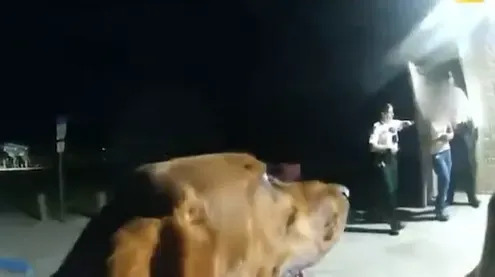
An 11-year-old girl, reported to be missing and endangered, is now safe after she was found by a sheriff’s K9 deputy in Wimauma, Florida. Her handler asked if the K9 could give the girl kisses as a reward to the K9 for locating the girl, and the heartwarming moment was captured on the deputy’s body camera.
6. Oregon Zoo releases seven critically endangered condors back to nature in California

Seven California condors were released into the wild in the U.S. state after the endangered animals were hatched and raised at Oregon Zoo.
7. EU will force cosmetic companies to pay to reduce microplastic pollution
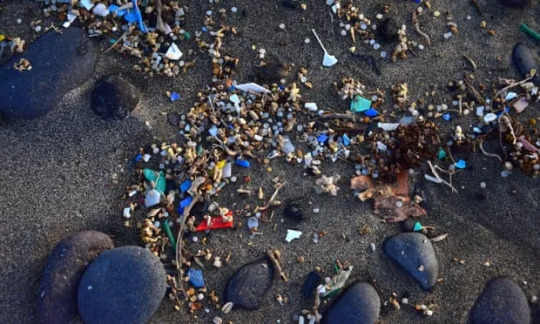
Beauty companies will have to pay more to clean up micropollutants after EU negotiators struck a new deal to treat sewage.
Under draft rules that follow the “polluter pays principle”, companies that sell medicines and cosmetics will have to cover at least 80% of the extra costs needed to get rid of tiny pollutants that are dirtying urban wastewater.
---
That's it for this week :)
This newsletter will always be free. If you liked this post you can support me with a small kofi donation here:
Buy me a coffee ❤️
Also don’t forget to reblog this post with your friends.
662 notes
·
View notes
Text
The Onondaga claim that the United States violated a 1794 treaty, signed by George Washington, that guaranteed 2.5 million acres in central New York to them. The case, filed in 2014, is the second brought by an American Indian nation against the United States in an international human rights body; a finding is expected as soon as this year.
Even if the Onondaga are successful, the result will mostly be symbolic. The entity, the Inter-American Commission on Human Rights, has no power to enforce a finding or settlement, and the United States has said that it does not consider the commission’s recommendations to be binding.
“We could win against them, but that doesn’t mean that they have to abide by whatever,” Mr. Hill said in an interview.
The 2.5 million acres have long since been transformed by highways and utility lines, shopping malls, universities, airports and roller rinks.
The territory encompasses the cities of Binghamton and Syracuse, as well as more than 30 state forests, dozens of lakes and countless streams and tributaries. It is also home to 24 Superfund sites, the environmental detritus of the powerhouse economy that helped central New York thrive during the beginning and middle half of the 20th century.
Most notorious of these is Lake Onondaga, which once held the dubious title of America’s most polluted lake.
Industrial waste has left its mark on Onondaga territory, leaving the nation unable to fish from its streams and rivers. The history of environmental degradation is part of what motivates the Onondaga, who consider it their sacred responsibility to protect their land.
One of their chief objectives in filing the petition is a seat at the table on environmental decisions across the original territory. The other is an acknowledgment that New York, even if only in principle, owes them 2.5 million acres.[...]
Some Native nations have been willing to drop land claims in exchange for licenses to operate casinos. But the Onondaga say they are not interested in cash. Nor are they interested in licenses to sell cannabis or operate a casino — which they consider socially irresponsible and a threat to their tribal sovereignty.
There’s really just one thing that Mr. Hill says would be an acceptable form of payment: land.
The Onondaga insist they are not looking to displace anyone. Instead they hope the state might turn over a tract of unspoiled land for the nation to hunt, fish, preserve or develop as it sees fit. One such repatriation effort is underway: the return of 1,000 acres as a part of a federal settlement with Honeywell International for the contamination of Onondaga Lake.
The United States has not contested the Onondaga's account of how the nation lost its land. Indeed, the lawyers representing the United States in the Onondaga case have centered their argument on legal precedence, noting that courts at every level — including the U.S. Supreme Court — rejected the Onondaga’s claims as too old and most remedies too disruptive to the region’s current inhabitants.
To the Onondaga, the logic required to square these contentions seems unfair. Why should the United States be allowed to steal their land and face no obligation to give some back?[...]
In New York, [...] Native people were not considered to have standing to sue on their own behalf until 1987.[...]
In 2005, the Onondaga filed a version of their current claim in Federal District Court in the Northern District of New York, naming as defendants the State of New York, its governor, Onondaga County, the City of Syracuse and a handful of the companies responsible for the environmental degradation over the past centuries. A similar case filed by the Oneida Nation was, at the time, pending before the Supreme Court.
But just 18 days after the Onondaga filed their petition, the Supreme Court rejected the Oneidas’ case. The decision referenced an colonial-era legal theory known as the Doctrine of Discovery, which holds in part that Indigenous property claims were nullified by the “discovery” of that land by Christians.
The “long lapse of time” and “the attendant dramatic changes in the character” precluded the Oneida nation from the “disruptive remedy” it sought, Justice Ruth Bader Ginsburg wrote in the majority decision.[...]
[L]awyers for the Onondaga used the rejection as the premise for a new argument. They contended that the U.S. court system’s refusal to find in their favor proved that they could not find justice in the United States.
The petition filed before the international commission amounts to the most direct challenge of the United States’ treatment of Indigenous people to date in terms of human rights — and the first to apply the lens of colonialism.
“What the Onondaga litigation is doing right now is to force a political dialogue with the colonial occupier,” said Andrew Reid, a lawyer representing the Onondaga, adding that a favorable finding could prompt a political conversation about the United States’s treatment of native people on the world stage.
Representatives for the State Department declined to be interviewed and did not respond to requests for comment. But in legal documents, the United States contended that the Onondaga’s central claims have been rejected in prior cases; that they have had “abundant opportunity” for their case to be heard; and that they are merely unhappy with the outcome. It also contended that the commission has no jurisdiction, given that the bulk of the nation’s losses took place two centuries before it was established.
“The judicial process functioned as it should have in this matter,” the United States wrote in legal papers.
15 Mar 24
262 notes
·
View notes
Note
I love your animatronic toy OC guys so much, they have so much personality to them and their colours are really good (especially umbra)
Thank you! The funny thing about Umbra's design was that while I was developing it about two years ago and had some colors in mind, I described in text what I already came up with to an image generator for fun (shitty unconvincing old kind, vs now where it looks like shit but in a somewhat more convincing way) and it produced something so silly that I made her design better than what I would've settled with out of spite.
More details of my process and anti-AI ranting below the cut, so the examples given won't show up on search results. Google Images is getting polluted too much with slop to begin with.
Let's begin.
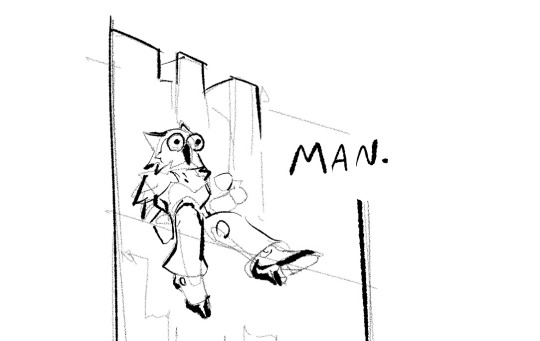
In 2022 I was drafting up Umbra's design with mostly concrete details. At this time image generators were newer and much less convincing, and I was a bit less aware of just how unethical they were, so I fed one a text description of what I had drafted for her design out of curiosity. Something along the lines of, "doll of an anthropomorphic owl librarian in glasses, blazer/suit jacket, skirt, corset, high heels, sitting on a bookshelf" and probably a few more terms. Really specific, lengthy prompt.
I try to be open-minded and give new things a shot, but the results were Not Great. Ideally, I'd want to not share the AI pictures at all on-principle, but I feel like it's useful, transparent, and necessary to show them. Both as a means of not hiding anything, but also just to appreciate where the design is at in spite of it.
Outside of this particular collage of Weird Owls, no other pictures on this blog are AI-generated. AI Image Generation is harmful, and I am against its usage.
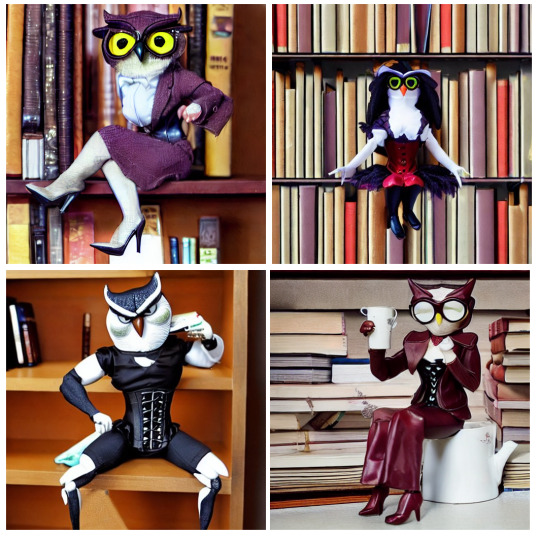
But hey, two of the generated pictures look close, right? The top left is the closest, and bottom right is second.
That's because they started out worse, and I had to actually erase chunks of them and have the generator fill in the blanks to get anything remotely close to what I wanted. Misshapen limbs, unrecognizable anatomy, fever-dream clothing details, etc. They didn't even have a corset or proper legs until I slapped the generator in the face enough times to make it produce them. I was just using it to photobash, which was such an annoying process, I just went "this is dumb" and stopped. They're literally posed like that because I kept erasing and regnerating their limbs until they looked vaguely in-character. It literally only looks passable thanks to STRANGLING it with human input.
Before I used the image generator, I already drafted her to be night-themed with yellow eyes and something like purple, dark blue, or sky-blue as her main color; the generator making one owl yellow-eyed and purple was a happy coincidence, and the only thing the generative AI "came up with" that I didn't already have in mind or included in the prompt was the light blue shirt, which I did adapt into her cyan shirt and stockings/socks as well. That was a good call. You get One Point, Mr. AI.
...Which still meant that at its absolute best, it was a largely redundant step in the creative process if its contribution was worse than what a randomized palette generator or character creator could come up with.
That's already putting the ethics of it aside, like carbon emissions, data pollution, using artists' and photographers' work without credit or permission, the incentive to plagiarize, flooding sites like deviantart with slop, Willy Wonka Shit, etc etc etc. When people say "you can use AI as a tool though", this ordeal was enough to convince me that it's more trouble than its worth, even in its most ethical usage. I feel gross for having even tried. I wish I knew what sources went into the creation of those Weird Owls. It'd be better for research if the right people could be credited.
Nothing else on this blog is AI-generated or ever will be. The art below is purely my own (2022 vs a few weeks ago)):


Actually drawing Umbra and solidifying her design was far more rewarding than having an image generator vaguely approximate my own ideas. I wanted her to look really special, so I used a black cape and pants, gold highlights and buttons, and blue undertones to make something more distinct. Also, neck floof. Very important. I wanted the head in particular to look distinct and original, going with bold black streaks to really help her look distinguished.
I also have certain inevitable Hydroisms for Fancy characters like her; most apparent in these designs for Chasey and Kaita from even longer ago, which were more of an influence than anything else. (Old art of mine from like 2021, Kaita ref looks wonky but Chasey still holds up nicely):
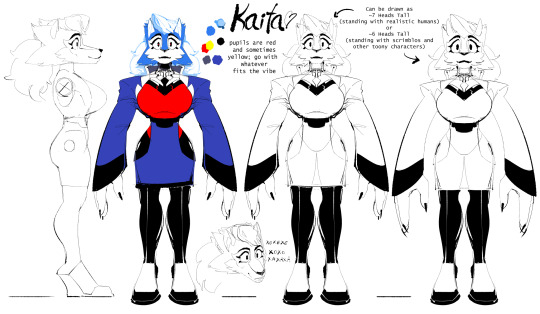
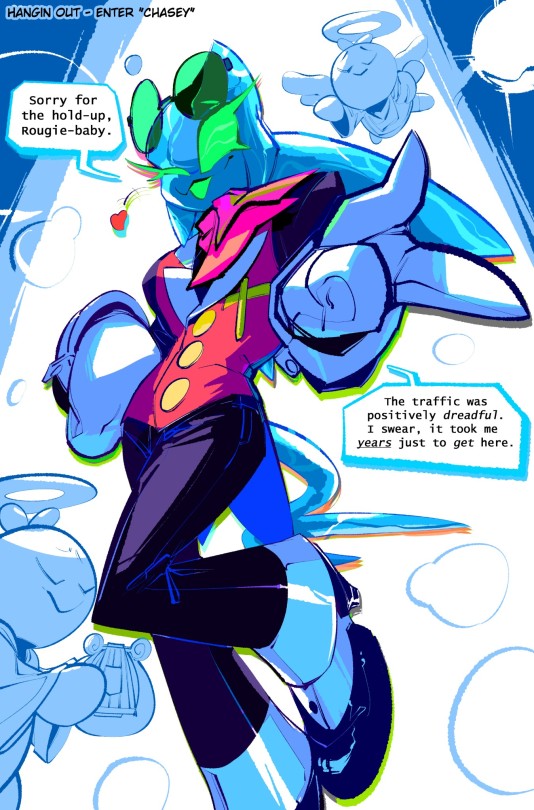
Most of Umbra's other design elements were already commonly used with established ocs like Kaita, like her shape language, corset, skirt, heels, etc. It was my previous work with Chasey that inspired the use of gold buttons and highlights.
Umbra is also now a bluer shade of purple partly to distance the current design from that ordeal. All things considered, I'll probably make her more indigo next time. I already wanted her to have a wide color range from the get-go (Featured below is, again, purely my art from 2022:)

I may use a different colored shirt and stockings in the future. I like to think she has many different shirts and clothes based on the different stages of the night sky, from dusk to dawn, and the painting I made in the top right there was an exploration of her range in different lighting.
All in all, it's frustrating. I'm proud of her design, but explaining all of this is annoying, because it's technically all relevant to showing how her colors were picked and how the design was made. I still technically have AI to """Thank""", in the way you thank a bad experience for encouraging you to make things better out of spite.
110 notes
·
View notes
Text
I fucking hate the old tram cars in this stupid city. Seriously fuck your aesthetic on top of not being handicap accessibe, the doors dont seal properly so it leaks heat amd to compensate they crank the heat all the way up (but they chose not to reduce the light display at christmas to save energy like the city promised they would). I shouldnt be sweating through my clothes in the wintertime during the 10 minutes i have to ride the transit before going back out into sub zero temp and frozen rain thats how you get fucking sick. But they are so eugenicist here theyre all perfectly happy to have corona and the flu run wild if it means not having to make any changes.
#i have literally never encounteres a culture more strongly dedicated to resisting any form of change#just on principle that nothing should ever change ever#(they think they have achieved the epitome of civilization and culture and so there is nothing to change)#once again#i have literally never met a more self deluded people#this city is so far from being actually sustainable especially compared to other cities in europe#but they genuinely think they do a good job at being green#while they literally burb trash in the middle of the city amd the entire weekend was an air pollution warning#cant tell thess guys their city is dirty tho esp the locals are so so far i to their deluaions of grandeur and superiority#bruh your city is in .decline
0 notes